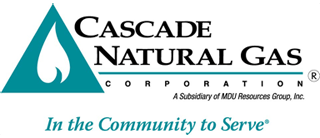The following feedback and opinions are from the Oregon Home Builders Association:
![]()

OSHA intends to adopt permanent rules for smoke and heat. As part of the rule-making process, OSHA is seeking input from employees of businesses that would be impacted by the rules. Employers and Employees should pay particular attention to the new proposed acclimation rule below.
Share your written comments with OSHA staff: Theodore.Bunch@dcbs.oregon.gov or Tom.Bozicevic@dcbs.oregon.gov.
Wildfire Smoke Rules
The basics:
- When the air quality index (AQI) is 101, employees can choose to wear N95 respirator masks to protect themselves from wildfire smoke particulate. Employers are required provide these masks to employees.
- When the AQI is 201 (OSHA is proposing to go to 151), employees who are exposed to wildfire smoke are required to wear an N95 respirator.
- When AQI is 500 or above, respirators must be worn by all employees, but the respiratory protection rule is also triggered, meaning that all employees must undergo medical evaluations and fit testing. (be prepared to shave facial hair)
Talking points:
- Washington took the approach of allowing employees to decide to wear respirators in smoky conditions.
- The requirements at 500 AQI essentially require employers to shut down operations during these conditions.
- Employers don’t disagree with providing education and training or supplying the proper PPE to employees; however, they believe workers should have the ability to choose if and when they want to wear a respirator.
Heat Illness Prevention Rules
The basics:
- At a heat index of 80 degrees: shade is required; sufficient water is required
- At a heat index of 90 degrees: shade and water are required; 10-minute cool-down breaks are required every 2 hours; employees must be monitored for heat illness; communication with employees must be maintained; employers must have an emergency medical plan; employers must develop acclimatization practices
Problem area:
- OR-OSHA is currently considering an additional acclimatization requirement that would limit the number of hours a new employee is allowed to work for a period of 7-14 days. Current employees would be subject to the requirement for 4 days.
- For new workers, the work schedule must be no more than 20% of the usual duration of work in the hot environment on day 1 and a no more than 20% increase on each additional day.
- For current employees, the acclimatization regimen must be no more than 50% of the usual duration of work in the hot environment on day one, 60% on day 2, 80% on day 3, and 100% on day 4. (this could be triggered every time temp. exceeds 90).
Talking points:
Not only would take-home pay be potentially impacted whenever the temperature exceeds 90 degrees, but many employers would be unable to maintain the workforce needed to stay open. This is a one size fits all approach that will have a negative impact on housing and construction in-general with the way staffing occurs in the construction industry. As an example, tracking employees and subs would be a significant challenge for the construction workforce. Many areas of the state have been working in high heat for years w/o identified problems at the rulemaking committee – this seems like it would hurt consumers that are waiting for homes and workers that live, recreate and work in warmer areas of the state.






0 Comments